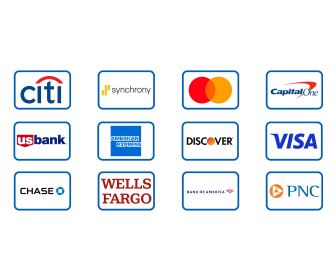The True Cost of Using a Credit Card Abroad (Avoid These Fees)
Using your credit card overseas feels convenient — no need to carry wads of cash or worry about conversion counters. But what many travelers don’t realize is that each swipe abroad could quietly cost 3% more than it should. Foreign transaction fees, currency conversions, and ATM surcharges can turn a dream vacation into an expensive lesson. Here’s how to understand those hidden costs — and how to avoid them entirely.
1. What Is a Foreign Transaction Fee?
A foreign transaction fee is a surcharge that most banks apply when a purchase involves a non-U.S. currency or is processed through a foreign bank. It’s typically around 3% of the purchase amount — for example, $30 on a $1,000 hotel bill. These fees combine charges from the card network (Visa, Mastercard) and your issuing bank.
According to the Consumer Financial Protection Bureau (CFPB), these costs often appear days later on your statement, making them easy to miss if you’re not checking regularly.
2. Dynamic Currency Conversion — The Sneakiest Trap
When paying abroad, some merchants offer to charge your purchase in U.S. dollars “for convenience.” That’s called Dynamic Currency Conversion (DCC), and it’s almost always a bad deal. The exchange rate used by DCC providers is typically 4–7% worse than the official rate — and you may still get hit with the 3% foreign transaction fee on top of that. Always choose to pay in the local currency.
3. ATM and Cash Advance Fees
Using your credit card at a foreign ATM can trigger both an international ATM fee and a cash advance fee. The latter can run 3–5% of the amount withdrawn — plus interest starting immediately. If you need cash abroad, use a debit card with global ATM partnerships instead, such as Charles Schwab Bank or Capital One 360 Checking.
4. Cards That Waive Foreign Fees
Many travel-friendly credit cards have eliminated these charges entirely. In 2025, the best no-foreign-fee options include:
- Chase Sapphire Preferred® — No foreign transaction fees, excellent travel protections, and transferable points to airline partners.
- Capital One Venture Rewards — No fees worldwide and a flat 2× miles on every purchase, making it simple for international use.
- Bank of America® Travel Rewards — No fees, no annual fee, and flexible redemption for travel expenses.
- Wells Fargo Autograph℠ Card — No foreign fees and bonus points on travel, gas, and dining.
5. Check the Exchange Rate Policy
Visa and Mastercard use mid-market rates, which are typically close to official currency values. However, banks sometimes apply a small markup. Compare rates using Visa’s currency tool before your trip. A 1% difference may seem small, but on a $5,000 vacation, that’s $50 lost in conversion.
Expert tip: Before traveling, notify your bank of your destination through their app or website. Sudden overseas transactions can trigger fraud alerts and freeze your card mid-trip.
6. How to Avoid All These Costs
- Use a no-foreign-fee credit card for all purchases abroad.
- Always choose to pay in the local currency — not USD.
- Carry a debit card that refunds international ATM fees.
- Download your bank’s mobile app to track spending in real-time and spot double charges fast.
Final Thoughts
Traveling internationally doesn’t have to mean hidden fees. With the right card and a bit of awareness, you can save hundreds while exploring the world. Remember: banks profit from your convenience — but knowledge keeps that money in your pocket. Choose your card wisely, pay in local currency, and let your passport — not your wallet — do the traveling.
Not financial advice. Fee structures and exchange rates vary by issuer and location. Always confirm current rates and terms before traveling internationally.
Continue reading: How to Use Credit Cards to Earn Free Flights (And Avoid the Traps) · Credit Cards That Offer Free Lounge Access — Travel Like a VIP



